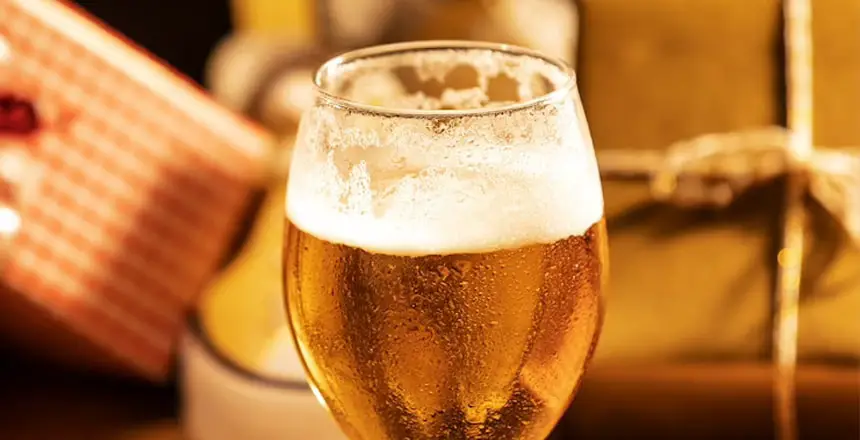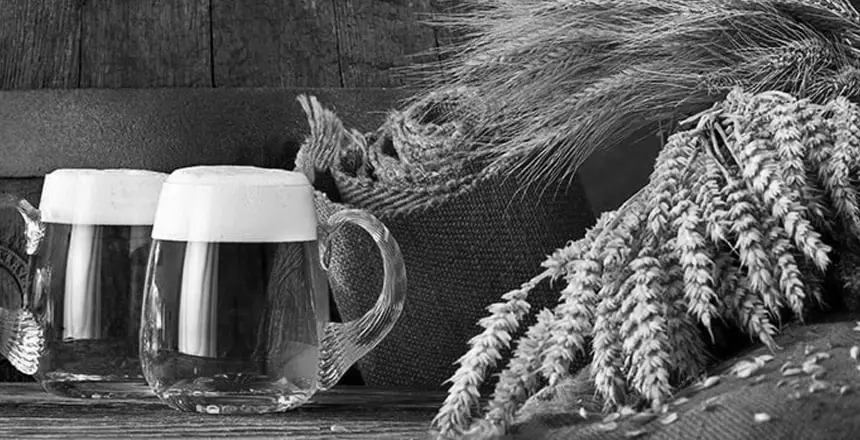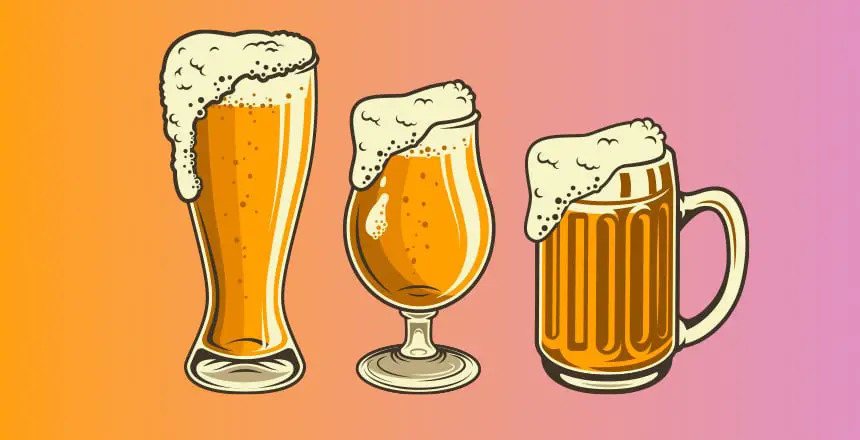Do you enjoy the taste of beer but don’t want to indulge in alcohol? If so, non-alcoholic beers are a great option for those wanting to avoid drinking alcohol.
Nowadays, with more beverage companies offering delicious and flavorful non-alcoholic beers as an alternative – it’s easier than ever to still have your favorite beer without putting any alcohol into your body.
But how much alcohol really is in a non-alcoholic beer? We answer this question and more in this blog post! Keep reading to learn about what goes into a non-alcoholic beer and whether or not you should be consuming them if you’re completely avoiding alcohol altogether.
Related:
- How Much Alcohol Is In Kombucha
- What Alcohol Is In Twisted Tea
- How Much Alcohol Is In Beer
- What Temperature Does Beer Freeze
- What is the Difference Between Ginger Ale and Ginger Beer
- What Does Beer Taste Like
Contents
What Is Non-Alcoholic Beer?

Technically, a beer that has very little or no alcohol at all is considered non-alcoholic. Although Non-alcoholic (NA) beers marketed in the USA are only permitted to have a maximum alcohol content (ABV) of 0.5 percent, many companies advertise a 0.0% ABV.
Non-alcoholic beer used to be believed to be insipid and watery, however, new developers have greatly improved the market for the quality of non-alcoholic beer.
Some non-alcoholic brews today taste and smell almost exactly like alcoholic ones. Additionally, there are an infinite number of options available. Businesses like Athletic Brewing give every variety imaginable, including IPAs, hazy, light, golden ales, lagers, sour, and even special flavors such as Oktoberfest.
Brief History Of Non-Alcoholic Beer

Small beer, also known as low-alcohol beer, has its origins in ancient Europe. Utilizing the “second runnings” of the crushing procedure, which occur when breweries rinse their cereals with water, is one method for producing tiny batches of beer.
Because there are fewer fermentable carbohydrates in this weak wort, yeast cannot produce as much alcohol. However, the ABV of tiny beers can still be in the between 2 and 3 percent range.
It may come as no surprise that non-alcoholic beer, at least in the Americas, gained popularity during the Prohibition period. The Volstead Act limited the amount of alcohol in any drink to 0.5 percent ABV and was approved by Congress in 1919 (though President Wilson initially rejected it!).
As a component of their plan to continue operating until the enactment of the twenty-first Amendment, some industrial brewers did make non-alcoholic beer.
How Much Alcohol Is In Non-Alcoholic Beer?
How much alcohol in beer is considered non-alcoholic? Non-alcoholic brews can have a range of ABVs, but according to federal legislation, they must all be under 0.5 percent ABV.
This is comparable to the quantity of alcohol present in frequently eaten foods that have experienced a certain level of fermentation, such as thoroughly ripe bananas or just other ripe fruits, the majority of bread varieties, Kombucha, kefir, yogurt, and fruit juice.
For instance, according to a study in the Journal of Analytical Toxicology, mature bananas have an ABV of 0.4 percent whereas “American-style burger rolls” have an ABV of up to 1.28 percent. Some non-alcoholic brews can claim to be free of alcohol because they have an ABV of zero percent.
On the other hand, other non-alcoholic beer companies work as hard as they’re able to reach the 0.5 percent ABV restriction.
How to Make Non-Alcoholic Beer?
The majority of non-alcoholic beers available on the marketplace are brewed using exactly the same yeast, water, hops, and wheat cereals as alcoholic beers. The main distinction is that steps were taken to decrease or eliminate the alcohol at a certain point during the process of brewing. You may either make it with no alcohol or remove the alcohol, which is one of the alternative routes.
There are a number of ways to do this, but the majority of non-alcoholic brews do so either through filtering, which eliminates the alcohol after the fermentation process, or through the process of evaporation, which employs heat to remove the alcohol.
Even a novel fermentation technique has entered the competition. This process, which they term limited alcohol fermentation, involves reducing the formation of alcohol right away by using a special yeast that only produces a small quantity of alcohol throughout the period of fermentation. Similar to the other non-alcoholic beer brewing methods, the final product must taste and scent like a genuine thing.
What are the Major Advantages Of Non-Alcoholic Beer?
The major advantage of non-alcoholic beer is that it permits people to enjoy the flavor and experience of a beer without having to drink alcohol. Non-alcoholic beers are also frequently lower in calories, though this can differ based on the particular product.
It’s also better for your body since it does not contain any toxins or ethyl alcohol. As such, it has less impact on your blood sugar levels, which makes it easier to maintain regular glucose levels while drinking non-alcoholic beer than alcoholic ones.
Furthermore, non-alcoholic beer may be used as a mixer in cocktails or mixed drinks due to its low ABV content. In addition, there have been studies suggesting that the consumption of non-alcoholic beers can reduce stress, help with hydration, and offer some health benefits.
Can Women Drink Non-Alcoholic Beer While Pregnant?
The issue of whether women who are pregnant can drink non-alcoholic beer without harming themselves is more prevalent than ever due to the rising appeal of these drinks. Additionally, alcohol is a recognized teratogen, making it a major contributor to congenital defects.
There are no studies that support or refute the safety of mothers-to-be consuming non-alcoholic beer. However, there is proof that indicates non-alcoholic drinks like beer might have more ethanol than is indicated on their packaging, which is potentially deceptive.
The liver of the pregnant infant is the last part to grow and doesn’t reach complete maturity until the woman’s pregnancy is over. It follows that they are unable to metabolize any alcohol that mom consumes while she is pregnant. Whatever you along with your physician decide is most beneficial to you and the baby you’re expecting is what matters in the end.
FAQs
Can Non-Alcoholic Beer Make You Drunk?
No, non-alcoholic beer has a very low alcohol content (less than 0.5 percent ABV), so it will not make you drunk.
Is 0.5% Regarding As Being Alcohol-Free?
Yes, 0.5% is regarded as alcohol-free by most countries around the world, and many other non-alcoholic beer companies work to ensure that their beers are below this 0.5% threshold.
Is Non-Alcoholic Beer More Healthy Than Regular One?
Non-alcoholic beer is typically regarded as healthier than its alcoholic counterpart due to its beneficial effects on post-exercise recuperation, sleep, heart, liver, and mental wellness.
Additionally, since alcohol impairs perception and reduces satisfaction hormones which can lead to overeating or increased hunger, non-alcoholic beer also offers a healthier choice.
How Many Non-Alcoholic Beers Equal a Beer?
Non-alcoholic beers generally contain less than 0.5 percent ABV, whereas most common beer contains between 5 and 6 percent ABV.
Therefore, it would take many more non-alcoholic beers to equal the same amount of alcohol as a single beer.
Is Heineken 0 None-Alcoholic?
Yes, Heineken 0 is a non-alcoholic beer that contains only 0.0% ABV.
Is Budweiser 0 None-Alcoholic?
Yes, Budweiser 0 is a non-alcoholic beer that contains only 0.0% ABV.
Conclusion
As you can see, the amount of alcohol in non-alcoholic beer is generally less than 0.5% ABV, making it safe for those looking to minimize their intake or avoid alcohol altogether.
In addition, non-alcoholic beer gives you some of the flavor and experience of beer without the risk associated with ingesting alcohol. It is also low in calories, has no toxins or ethyl alcohol, and may even provide some health benefits.
Therefore, non-alcoholic beer might be an excellent option for people who are trying to put a limit on alcohol use without compromising the taste and experience of traditional beer. So, if you’re looking for an alternative to alcoholic beer, give it a try and you may just find yourself pleasantly surprised by what this low-calorie drink has to offer.
